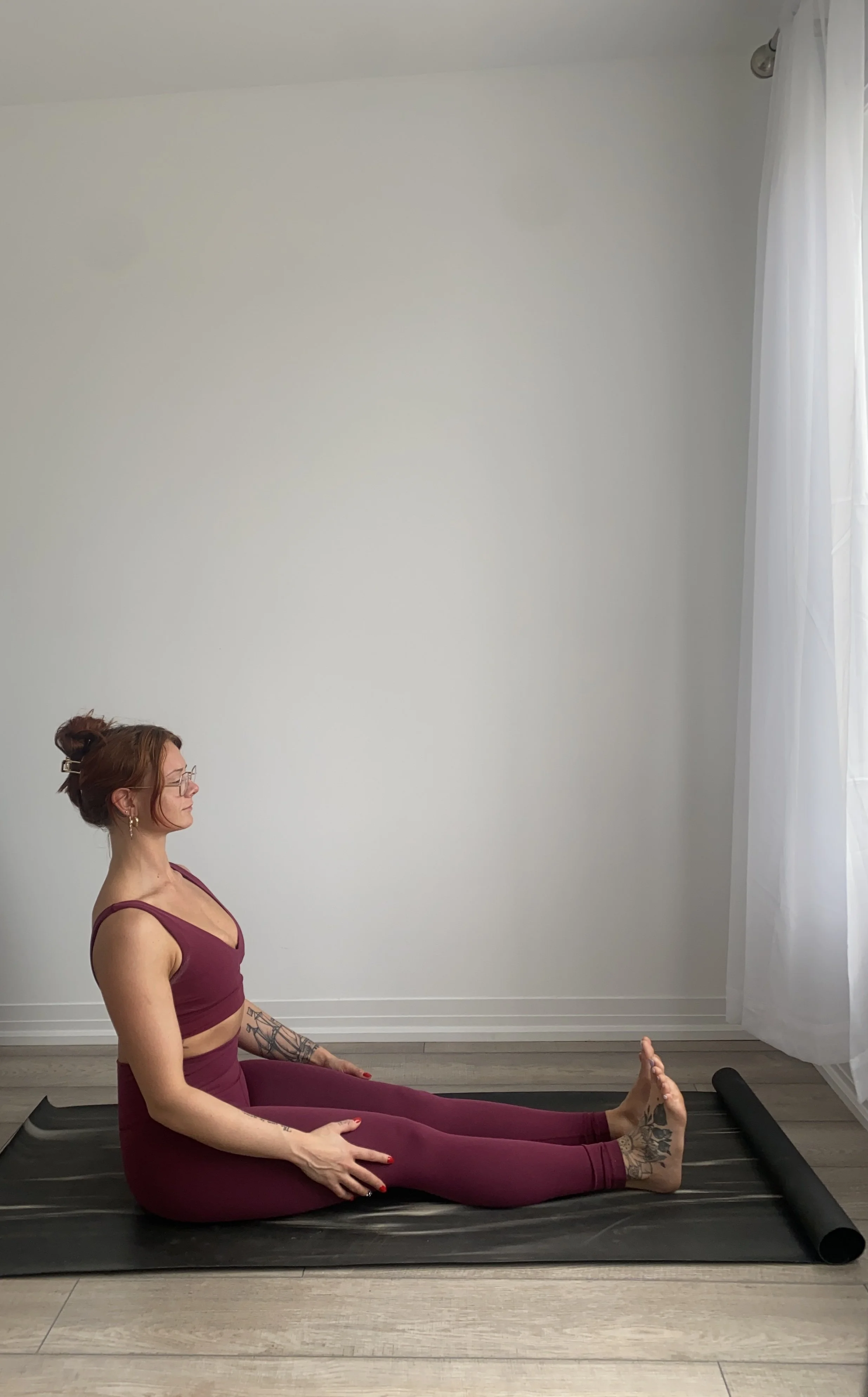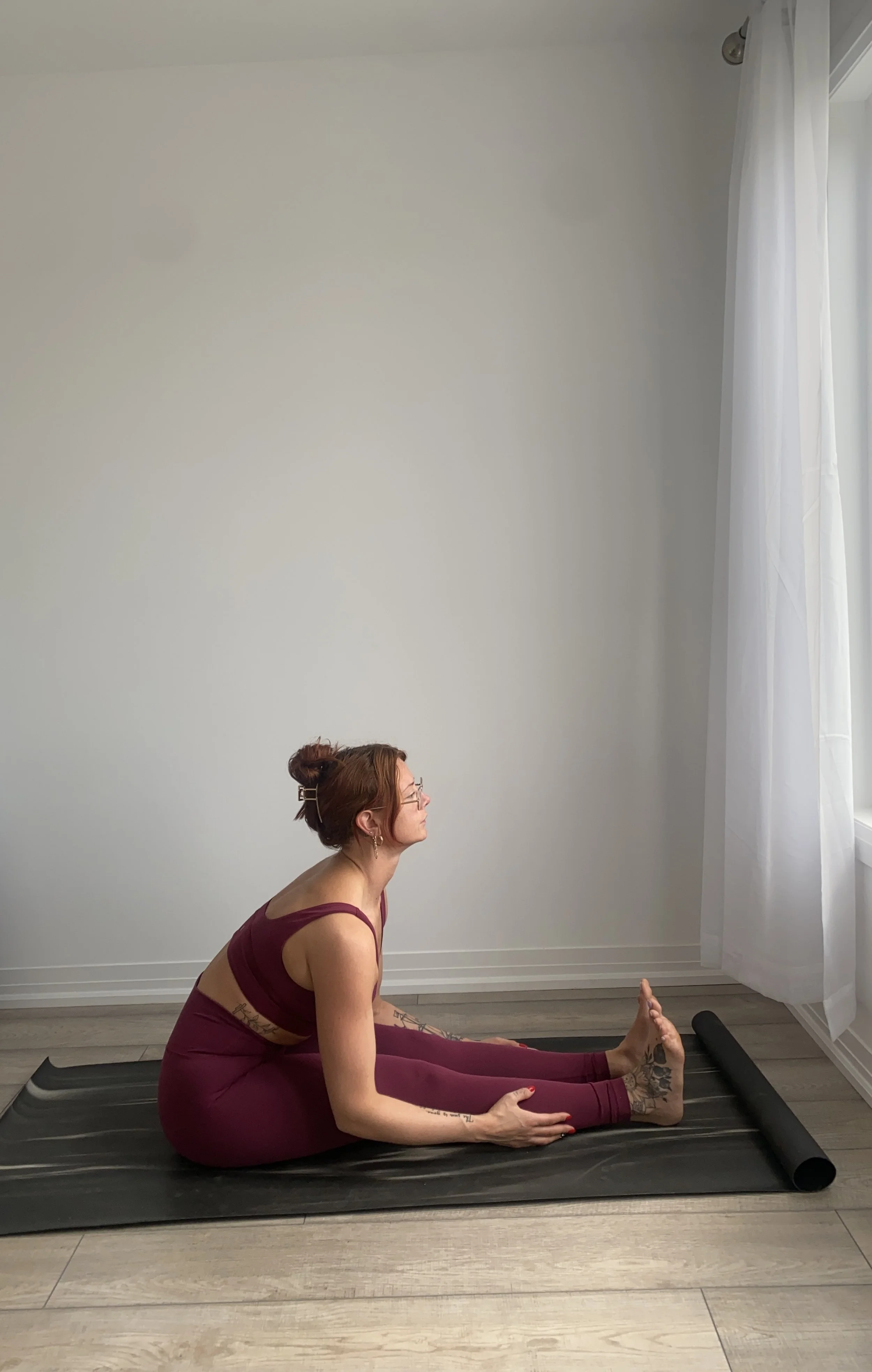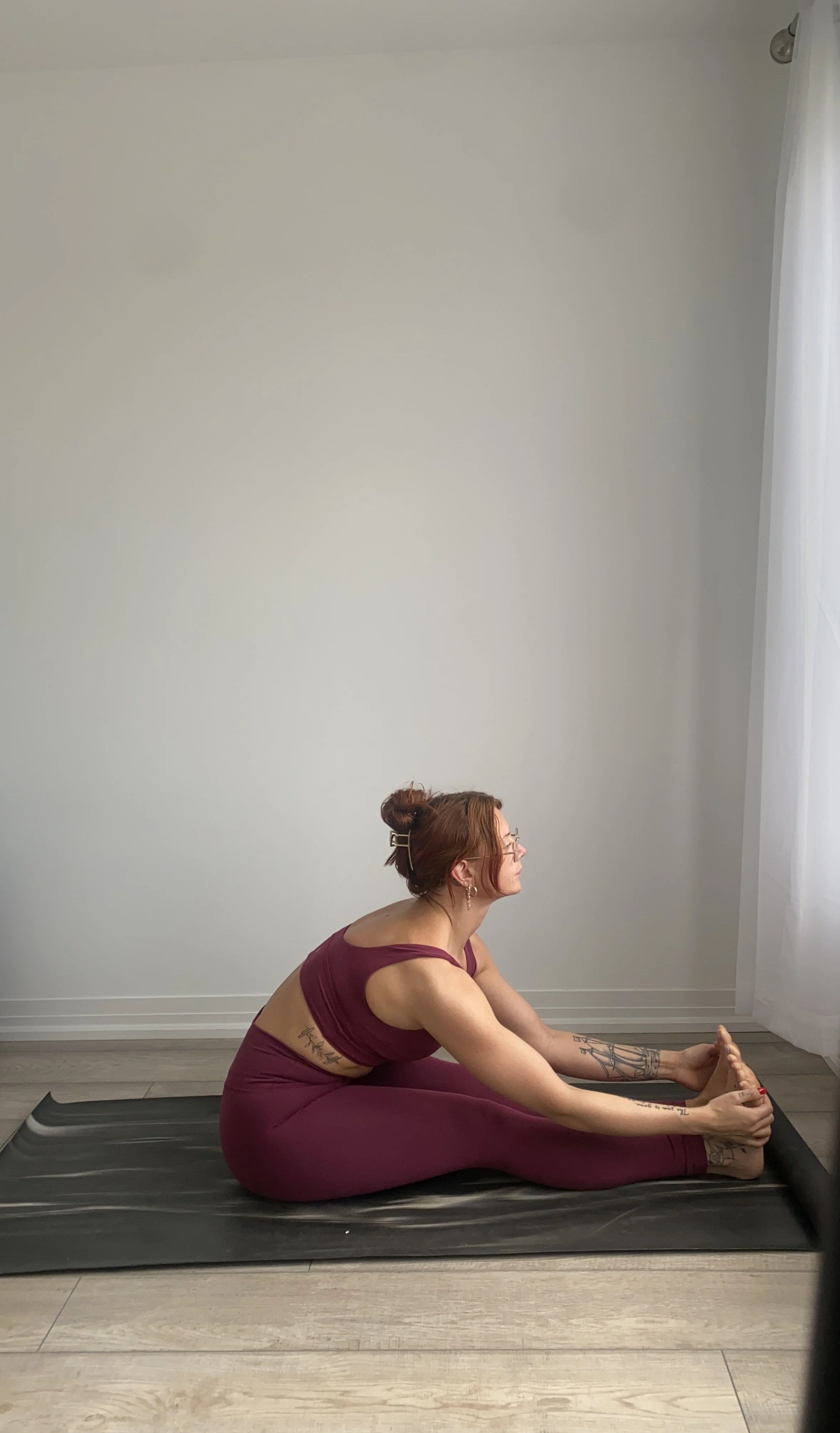Lumbar Spine Health: Essential Tips for a Pain-Free Back
The last and final component in the Spinal Series we’ll be discussing is the Lumbar Spine..
Your lumbar spine, the sturdy foundation of your lower back, plays a vital role in supporting your body and facilitating movement. Yet, for many, it's a source of discomfort and frustration, plagued by tightness, stiffness, and occasional bouts of pain. But what if I told you that fitness could be the key to unlocking a healthier, happier lumbar spine?
Understanding the Lumbar Spine:
The lumbar spine, positioned in the lower back region, is a crucial component of the vertebral column, bridging the thoracic spine above and the sacrum below. Comprised of five vertebrae labeled L1 to L5, the lumbar spine plays a pivotal role in providing support, stability, and flexibility for various activities and movements.
Key Features of the Lumbar Spine:
Shape and Structure: Lumbar vertebrae are the largest and strongest of the vertebral column, designed to bear the majority of the body's weight and withstand significant stress and load. They feature robust vertebral bodies that are wider and thicker in comparison to other spinal segments, providing ample support for the upper body and maintaining spinal alignment.
Spinous Processes: The spinous processes of lumbar vertebrae are relatively short and project posteriorly in a straight line. These structures serve as attachment points for muscles and ligaments that stabilize the spine and facilitate movement, contributing to the lumbar spine's overall strength and stability.
Intervertebral Discs: Intervertebral discs, located between adjacent lumbar vertebrae, act as shock absorbers and provide cushioning for the spine during movement and weight-bearing activities. These discs consist of a tough outer layer (annulus fibrosus) surrounding a gel-like inner core (nucleus pulposus), which helps to distribute forces evenly across the lumbar spine and maintain spinal flexibility.
Facet Joints: Facet joints, located on the posterior aspect of the vertebral arch, facilitate articulation between adjacent lumbar vertebrae. These joints play a crucial role in guiding and limiting spinal movement, contributing to stability and preventing excessive rotation or shearing forces on the spine.
Muscular Support: The lumbar spine is supported by a network of muscles, including the erector spinae, quadratus lumborum, and deep core muscles such as the transversus abdominis and multifidus. These muscles work in synergy to provide dynamic stabilization, maintain proper spinal alignment, and generate movement in the lower back and hips.
Function of the Lumbar Spine:
Weight Bearing: The lumbar spine bears the majority of the body's weight and serves as a stable foundation for maintaining an upright posture and performing weight-bearing activities such as standing, walking, and lifting.
Mobility and Flexibility: While less mobile than the cervical spine, the lumbar spine allows for a significant range of motion in flexion (forward bending), extension (backward bending), lateral flexion (side bending), and rotation. This mobility is essential for activities that involve bending, twisting, and reaching.
Protection of Spinal Cord and Nerves: The lumbar spine houses and protects the spinal cord's lower segments and the nerve roots that branch out from the spinal cord and innervate the lower body. These nerves control sensation, muscle function, and reflexes in the legs, feet, and pelvic region.
Support for Internal Organs: The lumbar spine provides structural support for the organs of the lower abdomen and pelvis, including the intestines, bladder, and reproductive organs. Proper alignment and stability of the lumbar spine are essential for maintaining optimal organ function and preventing issues such as pelvic floor dysfunction.
Importance of Lumbar Spine Health:
Maintaining the health and mobility of the lumbar spine is crucial for overall physical well-being and functional movement in daily activities. Poor posture, sedentary lifestyles, improper lifting techniques, and injuries can lead to issues such as lower back pain, stiffness, muscle imbalances, and reduced mobility. Incorporating exercises to strengthen the muscles supporting the lumbar spine, practicing proper lifting and movement mechanics, maintaining flexibility, and promoting spinal alignment through ergonomic adjustments can help prevent these issues and promote long-term spinal health.
Impact of Fitness on the Lumbar Spine:
Engaging in regular exercise and maintaining overall fitness levels can have significant impacts on the health and function of the lumbar spine. Here's how:
Strength Training: Building strength in the muscles surrounding the lumbar spine, including the erector spinae, abdominals, and glutes, can provide better support and stability for the vertebral column. Strengthening these muscles can help reduce the risk of lower back pain and injury by improving spinal alignment and posture.
Flexibility and Mobility Work: Incorporating stretching and mobility exercises targeting the muscles of the lower back, hips, and hamstrings can enhance flexibility and reduce stiffness in the lumbar spine. Practices like yoga, Pilates, and dynamic stretching can help maintain optimal range of motion and prevent tightness that may contribute to discomfort or injury.
Core Stability Training: Core stability exercises, such as planks, bridges, and bird-dogs, help strengthen the muscles that support the lumbar spine and pelvis. A strong and stable core is essential for maintaining proper spinal alignment, preventing excessive movement or strain on the lower back, and improving overall functional movement patterns.
Cardiovascular Activities: Cardiovascular exercises like walking, jogging, swimming, or cycling can improve cardiovascular health and overall fitness levels while also promoting spinal health. These activities help increase blood flow to the muscles and tissues surrounding the lumbar spine, which can aid in recovery, reduce inflammation, and support optimal tissue function.
Impact of Fitness on Lumbar Spine Health:
Tightness in the lumbar spine can occur due to various factors, including:
Poor Posture: Prolonged periods of sitting, standing, or lifting with improper posture can lead to muscle imbalances and strain in the muscles of the lower back, causing tightness and discomfort.
Muscle Weakness: Weakness in the core muscles, including the abdominals, obliques, and lower back muscles, can lead to compensatory tightening of other muscles to stabilize the lumbar spine, resulting in tightness and stiffness.
Overuse or Repetitive Movements: Activities that involve repetitive bending, lifting, or twisting motions can strain the muscles and ligaments of the lower back, leading to tightness and discomfort.
Injury or Trauma: Acute injuries, such as sprains, strains, or herniated discs, can cause inflammation and muscle spasms in the lumbar spine, resulting in tightness and restricted movement.
Degenerative Changes: Conditions such as degenerative disc disease, spinal stenosis, or osteoarthritis can lead to changes in the spinal discs and joints, resulting in stiffness and tightness in the lumbar spine over time.
Lack of Movement: Prolonged periods of inactivity or sedentary behavior can lead to muscle weakness and stiffness in the lumbar spine due to reduced blood flow and mobility.
Addressing tightness in the lumbar spine typically involves a combination of stretching exercises, strengthening exercises, ergonomic adjustments, and lifestyle modifications. It's essential to consult with a healthcare professional or physical therapist for an accurate diagnosis and personalized treatment plan tailored to individual needs.
Strategies for Lumbar Spine Health:
To promote the health and mobility of your lumbar spine, consider implementing the following strategies into your fitness regimen and daily life:
Regular Exercise: Engage in a balanced exercise routine that includes strength training, flexibility work, core stability exercises, and cardiovascular activities to support overall spinal health and function.
Proper Lifting Mechanics: Practice proper lifting techniques, such as bending at the knees and hips rather than the waist, keeping the spine neutral, and avoiding twisting or jerking motions, to reduce the risk of lower back injuries and strain.
Ergonomic Awareness: Maintain proper posture and body mechanics during daily activities, such as sitting, standing, and lifting. Use ergonomic furniture and equipment, such as supportive chairs and adjustable desks, to promote spinal alignment and reduce strain on the lower back.
Mindful Movement: Pay attention to your body's signals during exercise and daily activities, and avoid pushing through pain or discomfort. Listen to your body and modify movements as needed to prevent injury and promote long-term spinal health.
Active Recovery: Incorporate restorative practices such as foam rolling, massage, and gentle stretching into your recovery routine to alleviate muscle tension and promote relaxation in the lower back and hips.
Overall, adopting a holistic approach to fitness that includes strengthening, stretching, and maintaining proper movement patterns is essential for promoting lumbar spine health and reducing the risk of injury or discomfort. By prioritizing spinal health and incorporating targeted exercises and lifestyle modifications into your routine, you can support optimal function and mobility in the lumbar spine for years to come.
When it comes to stretching for the lumbar spine, both dynamic and static stretching can be beneficial, but they serve different purposes and have distinct advantages depending on your goals and needs.
Dynamic Stretching: Dynamic stretching involves moving through a range of motion in a controlled manner, typically in a repetitive fashion. This type of stretching is often used as part of a warm-up routine to prepare the muscles and joints for physical activity. Dynamic stretches help increase blood flow, warm up the muscles, and improve joint mobility without holding a stretch for an extended period.
Advantages of dynamic stretching for the lumbar spine include:
Improved circulation: Dynamic movements increase blood flow to the muscles and tissues surrounding the lumbar spine, promoting oxygenation and nutrient delivery, which can aid in recovery and reduce muscle stiffness.
Enhanced mobility: Dynamic stretching targets multiple muscle groups simultaneously, helping to improve flexibility and mobility in the lumbar spine and surrounding areas.
Warm-up: Dynamic stretching serves as an effective warm-up activity, preparing the body for more intense physical activity by increasing heart rate, body temperature, and muscle elasticity.
Injury prevention: By gradually increasing the range of motion and gently mobilizing the spine, dynamic stretching can help reduce the risk of injury during physical activity by preparing the muscles and joints for movement.
Examples of dynamic stretches for the lumbar spine may include trunk rotations, hip circles, and walking lunges with a torso twist.
Trunk Rotation:
1. Engage Core Muscles: The trunk rotation stretch targets key muscles of the torso, such as the obliques and spinal rotators, promoting flexibility and mobility in the lumbar and thoracic spine.
2. Execution: Begin by standing with feet shoulder-width apart, arms extended in front at shoulder height. Rotate the torso slowly to one side while keeping hips forward, holding for a few seconds, then return to center and repeat on the other side.
3. Benefits: This dynamic stretch can be incorporated into warm-up routines to prepare the body for physical activity or used independently to enhance spinal mobility, reduce stiffness, and promote overall spinal health.
Advantages of static stretching for the lumbar spine include:
Increased flexibility: Static stretching helps lengthen the muscles and connective tissues surrounding the lumbar spine, improving flexibility and range of motion.
Relaxation: Holding a static stretch allows the muscles to relax and release tension, promoting a sense of relaxation and reducing muscle stiffness.
Improved posture: Static stretching can help address muscle imbalances and tightness that contribute to poor posture, promoting proper spinal alignment and reducing the risk of back pain.
Recovery: Static stretching can be beneficial for post-workout recovery, helping to alleviate muscle soreness and prevent tightness in the lumbar spine and surrounding muscles.
Examples of static stretches for the lumbar spine may include seated forward bends, kneeling hip flexor stretches, and lying knee-to-chest stretches.
Seated Forward bend:
Targets Hamstrings and Lower Back: The seated forward bend stretch primarily targets the muscles of the hamstrings and lower back, promoting flexibility and mobility in these areas.
Execution: Sit on the floor with legs extended in front, feet flexed. Hinge at the hips and fold forward from the waist, reaching towards toes or shins while keeping spine straight. Hold the stretch for a few breaths, then slowly return to starting position.
Benefits: This stretch helps alleviate tension in the lower back, improves hamstring flexibility, and promotes relaxation. It can be incorporated into a stretching routine or used as a standalone exercise to enhance overall flexibility and reduce stiffness in the lower body.
The lumbar spine is integral to the body's stability and mobility, serving as a foundation for daily movements. Maintaining its health is crucial for proper biomechanics, injury prevention, and overall well-being. Practicing mindfulness in movement reduces strain and minimizes chronic issues, while maintaining correct posture distributes weight evenly, easing stress on muscles and discs. Targeted exercises strengthen lumbar muscles, enhancing stability and mobility, and reducing injury risk. By prioritizing lumbar spinal health through mindfulness, posture awareness, and targeted exercises, individuals can sustain an active lifestyle, improve mobility, and enhance overall well-being for years to come.
Hope that helps!
Happy Exercising,
Robyn






